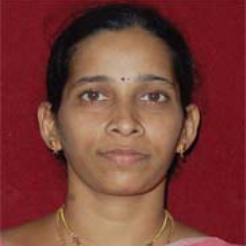International Journal of Information Technology and Computer Science (IJITCS)
IJITCS Vol. 7, No. 2, 8 Jan. 2015
Cover page and Table of Contents: PDF (size: 514KB)
Expert Finding System using Latent Effort Ranking in Academic Social Networks
Full Text (PDF, 514KB), PP.21-27
Views: 0 Downloads: 0
Author(s)
Index Terms
Expertise Matching, Latent Semantic Analysis, Text Mining, Social Networks, Information Retrieval Systems
Abstract
The dynamic nature of social network and the influence it has on the provision of immediate solutions to a simple task made their usage prominent and dependable. Whether it is a task of getting a solution to a trivial problem or buying a gadget online or any other task that involves collaborative effort, interacting with people across the globe, the immediate elucidation that comes into anyone’s mind is the social network. Question Answer systems, Feedback systems, Recommender systems, Reviewer Systems are some of the frequently needed applications that are used by people for taking a decision on performing a day to day task. Experts are needed to maintain such systems which will be helpful for the overall development of the web communities. Finding an expert who can do justice for a question involving multiple domain knowledge is a difficult task. This paper deal with an expert finding approach that involves extraction of expertise that is hidden in the profile documents and publications of a researcher who is a member of academic social network. Keywords extracted from an expert’s profile are correlated against index terms of the domain of expertise and the experts are ranked in the respective domains. This approach emphasizes on text mining to retrieve prominent keywords from publications of a researcher to identify his expertise and visualizes the result after statistical analysis.
Cite This Paper
Sobha K. Rani, KVSVN Raju, V. Valli Kumari,"Expert Finding System using Latent Effort Ranking in Academic Social Networks", International Journal of Information Technology and Computer Science(IJITCS), vol.7, no.2, pp.21-27, 2015. DOI:10.5815/ijitcs.2015.02.03
Reference
[1]Balog, Krisztian, Leif Azzopardi, and Maarten de Rijke. "A language modeling framework for expert finding." Information Processing & Management 45.1 (2009): 1-19.
[2]Zhang, Jing, Jie Tang, and Juanzi Li. "Expert finding in a social network." Advances in Databases: Concepts, Systems and Applications. Springer Berlin Heidelberg, 2007. 1066-1069.
[3]Lappas, Theodoros, Kun Liu, and Evimaria Terzi. "Finding a team of experts in social networks." Proceedings of the 15th ACM SIGKDD international conference on Knowledge discovery and data mining. ACM, 2009.
[4]Yang, Kai-Hsiang, et al. "EFS: Expert finding system based on Wikipedia link pattern analysis." Systems, Man and Cybernetics, 2008. SMC 2008. IEEE International Conference on. IEEE, 08.
[5]Mimno, David, and Andrew McCallum. "Expertise modeling for matching papers with reviewers." Proceedings of the 13th ACM SIGKDD international conference on Knowledge discovery and data mining. ACM, 2007.
[6]Kazienko, Przemyslaw, Katarzyna Musial, and Tomasz Kajdanowicz. "Multidimensional social network in the social recommender system." Systems, Man and Cybernetics, Part A: Systems and Humans, IEEE Transactions on 41.4 (2011): 746-759.
[7]Munoz-Organero, Mario, et al. "A collaborative recommender system based on space-time similarities." Pervasive Computing, IEEE 9.3 (2010): 81-87.
[8]Bordag, Stefan. "A comparison of co-occurrence and similarity measures as simulations of context." Computational Linguistics and Intelligent Text Processing. Springer Berlin Heidelberg, 2008. 52-63.
[9]Chi, Ed H. "Information seeking can be social." Computer 42.3 (2009): 42-46.
[10]Trier, Matthias, and Annette Bobrik. "Social search: exploring and searching social architectures in digital networks." Internet Computing, IEEE 13.2 (09): 51-59.
[11]Maybury, Mark T. "Expert finding systems." MITRE Cente_for_Integrated_Intelligence_Systems, MIT, (2006).
[12]http://cran.r-project.org/
[13]http://www.rdatamining.com/
[14]www.aminer.org
[15]www.academic.research.microsoft.com
[16]Santos, Igor, et al. "Enhanced Topic-based Vector Space Model for semantics-aware spam filtering." Expert Systems with applications 39.1(12): 437-444.
[17]Chow, Tommy WS, Haijun Zhang, and M. K. M. Rahman. "A new document representation using term frequency and vectorized graph connectionists with application to document retrieval." Expert Systems with Applications 36.10 (2009): 12023-12035.
[18]http://en.wikipedia.org/wiki/Tf/idf
[19]http://nlp.stanford.edu/IR-book/html/htmledition/inverse-document-frequy-1.html
[20]Jie Tang, Jing Zhang , Limin Yao, Juanzi Li , Li Zhang and Zhong Su, “ArnetMiner: Extraction and Mining of Academic Social Networks”, Knowledge Discovery & Datamining’08, August 24–27, 2008, Las Vegas, Nevada, USA.
[21]Gerald Kowalski, “Information Retrieval Systems”, Kluwer Academic Press
[22]Zhao, Ying, and Falk Scholer, "Predicting query performance for user-based search tasks." Australian Database Conference, Vol.7. 2007.
[23]http://www.thearling.com/glossary.htm
[24]http://www.webopedia.com/ ComputerScience/AI
[25]Becker, J., & Kuropka, D. (2003). “Topic-based vector space model”, in Proc. of the 6th Intnl Conf. on Business Information Systems (p 7–12).
[26]Lin Liu,Junkang Feng,"A Semantic Approach to the Notion of Representation and Its Application to Information Systems", IJITCS, vol.3, no.5, pp.39-50, 2011.


